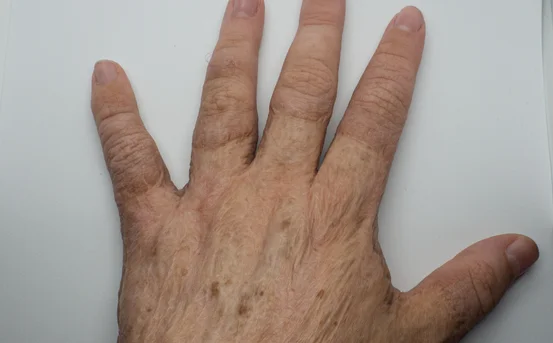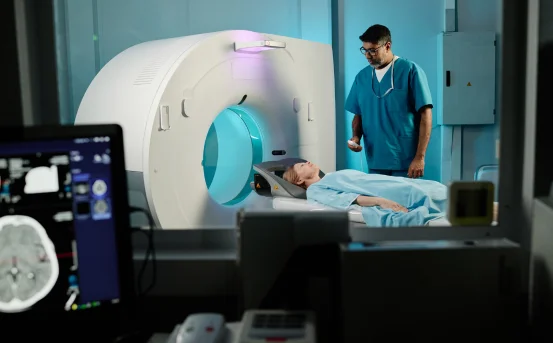Preserving gum health is essential for complete oral hygiene. However, periodontal diseases— infections of the structures surrounding the teeth—are often neglected until severe damage has occurred. For these individuals, surgical intervention becomes unavoidable as non-surgical approaches such as scaling and root planing are ineffective.
Periodontal surgery focuses on treating advanced stages of gum diseases to prevent tooth loss. The procedure includes gaining access to infected pockets, cleansing them, contouring and reshaping the affected gum tissue, and bone-structure regeneration if needed. Periodontal surgery is performed only when it’s absolutely crucial to maintain natural teeth and restore good health of supportive tissues around the teeth.
In this guide, we will discuss extensively the reasons, symptoms, diagnosis and treatment options available that require practitioners to perform periodontal surgery. This information should help you understand why sometimes minimially invasive approaches are not possible for maintaining dental health in the long term.
The Reason for Periodontal Surgery Explained
Most often periodontists recommend periodontal surgery due to advanced stage periodontitis or aggressive periodontitis where prior conservative treatments have failed.
Without surgical intervention these infections would inflict significant damage including tooth mobility leading to gum recession coupled with erosion of bone density thus eventually resulting in edentulism (toothlessness).
Following are some potential explanations that deem periodontal surgery necessary:
- To eradicate deep-set periodontal spaces wherein pathogens are harboured and replicated into colonies
- To regenerate lost bone and tissue structure
- To reshape or restore supportive periodontal structures.
- To prepare the gums for dental implant procedures.
- To prevent the perpetuation of periodontitis in adjacent teeth.
Periodontal surgery helps to treat periodontitis which aids in retaining the natural teeth and supporting the oral as well as overall health of the body, enhancing systemic wellness.
Symptoms That Indicate Need of Periodontics
Identifying early signs of periodontal disease is very important—and here are some symptoms that could require surgical intervention:
- Persistent halitosis coupled with a bad taste
- Gingival bleeding while brushing or flossing teeth
- Swollen gingiva which appears edematous, congested, tender and acutely inflamed
- Apical migration of gingiva resulting in cervico-coronal exposure of more tooth structure
- Formation of pathological deep periodontal pockets exposed between teeth and gums
- Mobility or migration of teeth increasing in looseness
- Dull ache during mastication or hyperesthesia of dentition
- Purulent discharge around tissues tufted by the tooth and gum interface
These often suggest the presence of a bacterial infection that requires treatment but if left unchecked might lead to an advanced stage where surgical intervention may be needed.
Periodontal Etiology Limited to Surgical Interventions
This can help focus attention towards proactive measures along with timely action. A few primary factors contributing toward surgical intervention include:
1.Omission Of Oral Care Duties
Brushing Flossing: Neglecting routine brushing and flossing results in plaque, finding refuge on surfaces undisturbed over time.Aggravated form: Tartar ensues pushing gum tissue into inflammation.
- Genetics
A subset of individuals face a genetic risk for periodontitis, irrespective of oral hygiene habits.
- Smoking and Tobacco Use
Smoking and other forms of tobacco use is a leading risk factor that impairs gum healing as well as exacerbates infection.
- Hormonal Changes
Pregnancy, menopause, or puberty tend to heighten the predisposition towards periodontal disease while increasing the sensitivity of gums.
- Chronic Illnesses
Chronic conditions such as diabetes, heart disease, and certain autoimmune diseases can increase the risk of developing gum infections.
- Stress and Poor Nutrition
Chronic stress overrides and suppresses the immune system, while certain deficiencies inhibit proper nutrition for supporting gum tissue.
Diagnosis: Identifying Periodontal Disease
Having a precise diagnosis greatly affects treatment strategy—as such critical decisions are made only post comprehensive evaluations done by dentists or periodontists including:
- Visual Examination
The visual examination involves looking for signs of gingival inflammation alongside bleeding or recession.
- Probing Pocket Depths
Interdental probing is performed with a calibrated probe to measure pocket depth around each tooth: any measurement mores than 4mm indicates periodontitis.
- Dental X-rays
X-rays are crucial in showing bone resorption degeneratively occurring around teeth aiding in assessing amount and extent of damage.
- Medical and Dental History
Lifestyle factors like smoking along with personal or family medical conditions such as diabetes which impact gum health form vital part in guiding assessment when noted will change outcome(s).
Using the diagnostic tools provided, the dentist will evaluate if a surgical procedure is needed.
Treatment Periodontal Surgery Classification
Depending on the specific diagnosis and condition of your gums, your periodontist may recommend one or more of following types of periodontal surgery:
- Flap surgery (Pocket reduction surgery)
This is a surgical procedure where the gums are turned back (flapped) to access and remove tartar and bacteria from below the gum line. After cleaning, the gums are sutured around the teeth in a way that will eliminate or at least reduce pockets.
- Bone grafting
Bone grafting is indicated when there is bone loss associated with periodontitis. The periodontist implants an autogenous or allogenic bone to restore lost bone structure.
- Guided tissue regeneration (GTR)
This technique places a mesh-like material between bone and gum tissue to allow for regrowth of bone and connective tissue while keeping unwanted tissue from interfering.
- Soft tissue grafts
Indicated for reinforcing thinned-out gums or filling gaps caused by recession of gums Soft tissue is often taken from the palate (roof) and sutured to the site.
5.Laser-assisted periodontal therapy
This method utilizes laser beams to remove diseased tissues and bacteria without cutting and suturing . This method is less invasive compared to traditional methods which allows for fast recovery with minimal discomfort.Recovery and Post-Operative Care
General recovery guidelines after a procedure include:
- Maintain oral hygiene with gentle brushing as well as prescribed mouth rinses and rinses.
- Refrain from smoking to avoid complication during the period of rest bone healing.
- Take antibiotics and pain medication only in the prescribed amounts.
- Participate in follow-up visits to assess progress, for appropriate intervention if any issues are detected, and to prevent complications.
- Patients should expect improvement in gum health, less bleeding, stabilization of teeth over time with consistent care.
Conclusion
Yes. For advanced stages of gum disease, periodontal surgery is often the preferred approach when non-surgical methods fail because it removes the infected tissue and pockets that harbor bacteria. It not only enhances oral health but also minimizes tooth loss, improves aesthetics, and reduces systemic disease risks associated with infections in gums.
If you have chronic discomfort associated with your gums or are diagnosed with periodontitis, consider consulting a periodontist regarding surgical approaches which will help improve your smile while protecting your oral health for years to come.






















